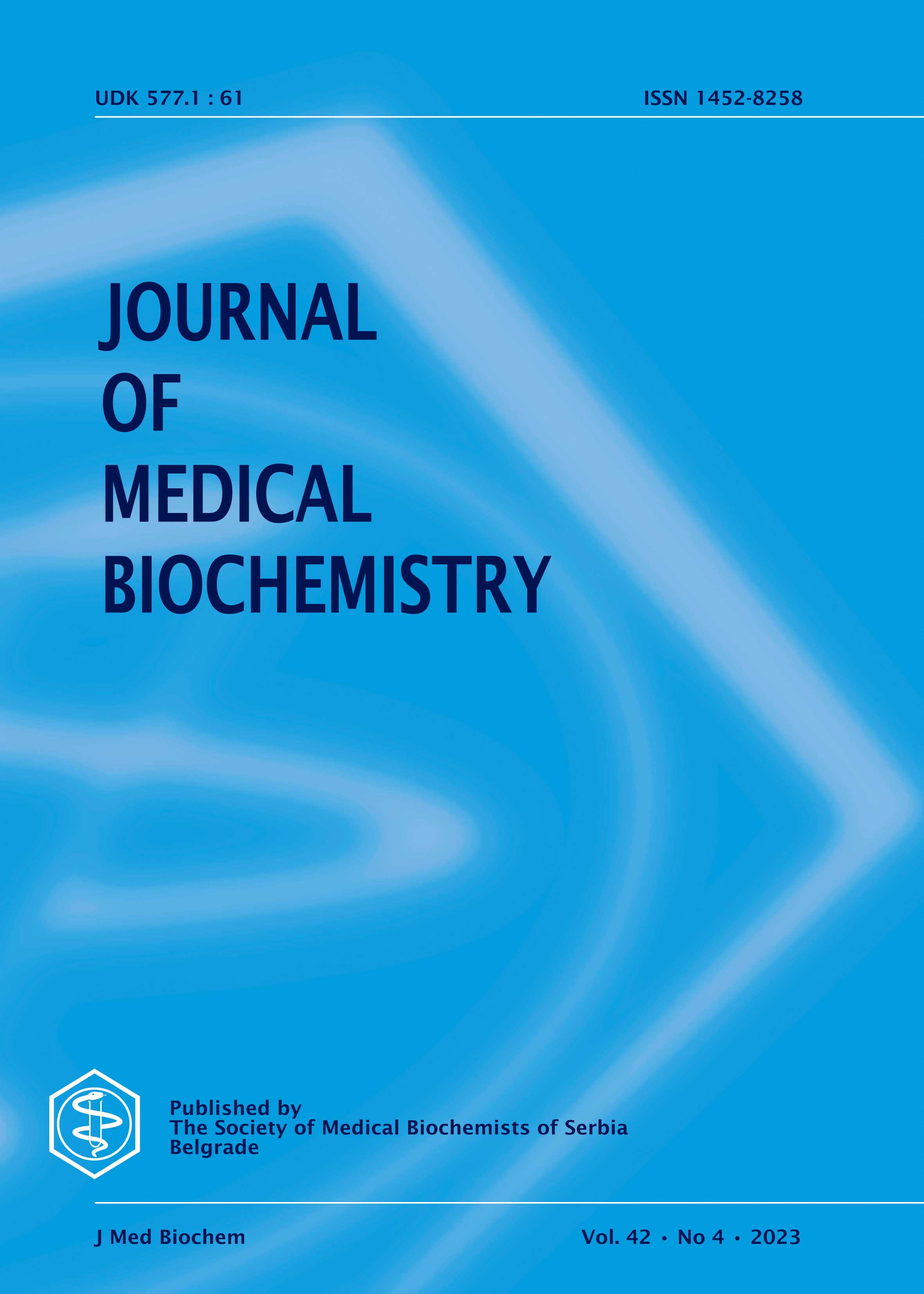Hemolysis detection for ethanol measurement in whole blood samples before centrifugation: HemCheck device evaluation
Abstract
Introduction
As previously reported, hemolysis interference affects ethanol measurements as well. Ethanol is the most commonly abused substance worldwide. When sample re-collection is ordered to eliminate hemolysis effects for ethanol testing, this can have unfavorable consequences for these patients. Rapid detection of hemolyzed specimens would alleviate some issues associated with forensic samples. HemCheck™ is a novel POCT device that qualitatively detects free-hemoglobin levels on the specimen shortly after drawing the sample.
Materials and methods
The system consists of two components. One is a cartridge with a needle that is used to transfer a small volume of whole blood from a vacuum tube to vertical and lateral flow filtration. The second component is a reader. Consumable cartridges are inserted into the reader without the syringe or blood collection tube being removed. A red indicator led illuminates, indicating that the sample has been hemolyzed. We calculated C5-C95 interval and C50 to determine imprecision. We used the Roche Cobas clinical chemistry analyzer as a comparator, and we used leftover samples for imprecision studies. Studies on hemoglobin interference were done using plasma pool samples that had been spiked.
Results:
Our C50 concentration were 45 mg/dL, the C5-C95 30 mg/dL and 60 mg/dL, respectively. Two methods reveal an overall agreement of 89,2%.
Conclusions
Even low quantities of free hemoglobin caused a bias in ethanol values, according to the interference experiment. When it came to forensic samples, this bias was crucial. We demonstrated that the HemCheck can significantly improve the preanalytical quality, particularly in forensic specimens.
References
References
1. Plebani M, Piva E. Medical Errors: Pre-Analytical Issue in Patient Safety. Journal of Medical Biochemistry. 2010 Oct 1;29(4):310–4.
2. Carraro P, Servidio G, Plebani M. Hemolyzed Specimens: A Reason for Rejection or a Clinical Challenge? Clinical Chemistry. 2000 Feb 1;46(2):306–7.
3. Lippi G, Cervellin G, Favaloro EJ, Plebani M. In vitro and in vivo hemolysis an unresolved dispute in laboratory medicine. Berlin: De Gruyter; 2012.
4. Lippi G, Luca Salvagno G, Montagnana M, Brocco G, Cesare Guidi G. Influence of hemolysis on routine clinical chemistry testing. Clinical Chemistry and Laboratory Medicine (CCLM) [Internet]. 2006;44(3):311-316.
5. Çat A, Uçar KT, Gümüş A. Effect of haemolysis on an enzymatic measurement of ethanol. Biochem med (Online). 2021 Feb 15;31(1):85–92.
6. Vonghia L, Leggio L, Ferrulli A, Bertini M, Gasbarrini G, Addolorato G. Acute alcohol intoxication. European Journal of Internal Medicine. 2008 Dec;19(8):561–7.
7. Kosecki PA, Brooke P, Abbott L, Canonico E. The effect of sample hemolysis on blood ethanol analysis using headspace gas chromatography. J Forensic Sci. 2021 May;66(3):1136–42.
8. Tiscione N. The Impact of Hemolysis on the Accuracy of Ethanol Determinations. J Anal Toxicol. 2015 Oct;39(8):672–3.
9. Duhalde H, Skogö J, Karlsson M. Point-of-care hemolysis detection in blood gas specimens directly at the emergency department. Scandinavian Journal of Clinical and Laboratory Investigation. 2019 Jul 4;79(5):283–7.
10. Garrett PE, Lasky FD, Meier KL, Clark LW, Clinical and Laboratory Standards Institute. User protocol for evaluation of qualitative test performance: approved guideline. Wayne, Pa.: Clinical and Laboratory Standards Institute; 2008.
11. Lippi G, Plebani M, Di Somma S, Cervellin G. Hemolyzed specimens: a major challenge for emergency departments and clinical laboratories. Critical Reviews in Clinical Laboratory Sciences. 2011 Jun;48(3):143–53.
12. Ustundağ Y, Huysal K, Eren SE. Determining the need for repeat testing of blood ethanol concentration: Evaluation of the synchron blood ethyl alcohol assay kit. Journal of Medical Biochemistry. 2019 May 11;38(3):317–22.
13. Scientific Working Group for Forensic Toxicology (SWGTOX) Standard Practices for Method Validation in Forensic Toxicology. Journal of Analytical Toxicology. 2013 Sep 1;37(7):452–74.
14. Lippi G, Mercadanti M, Musa R, Aloe R, Cervellin G. The concentration of plasma ethanol measured with an enzymatic assay is decreased in hemolyzed specimens. Clinica Chimica Acta. 2012 Jan;413(1–2):356–7.
15. Lippi G, Fontana R, Avanzini P, Sandei F, Ippolito L. Influence of spurious hemolysis on blood gas analysis. Clinical Chemistry and Laboratory Medicine (CCLM). 2013 Aug 1;51(8):1651–4.
16. Pum J. A practical guide to validation and verification of analytical methods in the clinical laboratory. In: Advances in Clinical Chemistry Elsevier; 2019. p. 215–81.
Copyright (c) 2023 Oguzhan Zengi, Meltem Boz, Beyazit Semih Yesil, Alper Gumus

This work is licensed under a Creative Commons Attribution 4.0 International License.
The published articles will be distributed under the Creative Commons Attribution 4.0 International License (CC BY). It is allowed to copy and redistribute the material in any medium or format, and remix, transform, and build upon it for any purpose, even commercially, as long as appropriate credit is given to the original author(s), a link to the license is provided and it is indicated if changes were made. Users are required to provide full bibliographic description of the original publication (authors, article title, journal title, volume, issue, pages), as well as its DOI code. In electronic publishing, users are also required to link the content with both the original article published in Journal of Medical Biochemistry and the licence used.
Authors are able to enter into separate, additional contractual arrangements for the non-exclusive distribution of the journal's published version of the work (e.g., post it to an institutional repository or publish it in a book), with an acknowledgement of its initial publication in this journal.

